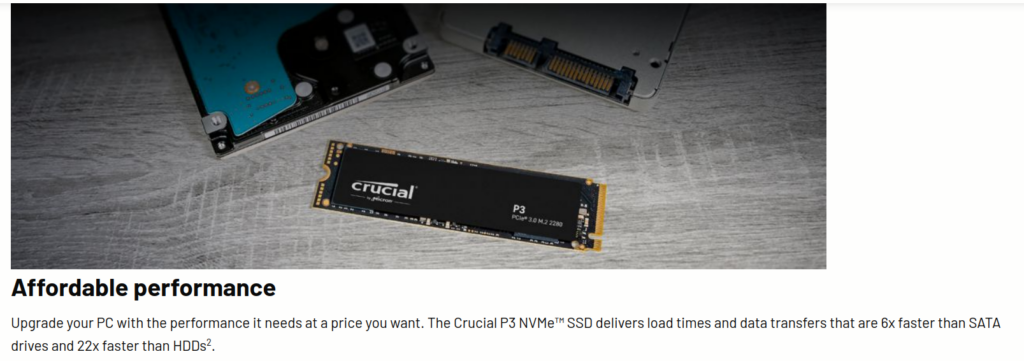In the realm of solid-state drives (SSDs), expectations are high, especially when consumers are parting with a significant amount of money in anticipation of a substantial performance boost for their computing needs. However, a recent experience with Crucial’s P3 SSDs has brought to light some unsettling truths about the product’s advertised capabilities versus its real-world performance. This revelation is particularly jarring for those who have invested approximately 3*250€ for three 4TB SSDs from Crucial, expecting blazing-fast data transfer rates only to be met with disappointment.
The Misleading Metrics of Performance
Crucial’s marketing strategy focuses heavily on showcasing the sequential transfer rates and Input/Output Operations Per Second (IOPS) of their SSDs. While these metrics may seem impressive on paper, they don’t paint a complete picture of the drive’s performance under typical usage scenarios. The real issue arises from Crucial’s failure to disclose performance benchmarks for mixed random Input/Output (IO), which is a more common use-case scenario for the average user and a critical performance indicator for SSDs.
The Hidden Compromises
Moreover, Crucial has been less than forthcoming about significant technical omissions in their P3 SSDs:
- Lack of Caching: The absence of both write and read cache (DRAM) is a critical detail that Crucial has omitted. Caching is essential for improving the speed and lifespan of SSDs by reducing the wear on the memory cells.
- QLC NAND Technology: The use of Quad-Level Cell (QLC) NAND technology is another compromise. While QLC allows for higher storage density at a lower cost, it comes at the expense of performance and durability. Crucial does not adequately inform consumers that QLC NAND can be twice as slow as Triple-Level Cell (TLC) NAND, nor does it discuss the implications for the drive’s longevity and speed.
Real-World Performance Disappointment
The performance of the Crucial P3 SSDs in real-world applications is alarmingly poor. Even with minimal activity and handling large, nearly sequential data chunks, the drives become saturated, managing only 5 to 20MB/s. This performance further degrades with total random mixed IO operations, sometimes dropping to as low as 2MB/s. Such dismal performance is not what one would expect from a high-end, or even mid-range, SSD, especially when marketed at prices comparable to significantly superior hardware.
A Comparative Perspective
To illustrate the severity of the issue, consider the performance of a Crucial P3 SSD alongside a WD_Black SN850X during a Ceph rebalance operation. The metrics of interest, write kilobytes per second (wkB/s) and utilization percentage (%util), clearly demonstrate the P3’s inability to handle the load efficiently. Ideally, %util should be as low as possible, indicating that the drive is not being overworked, and wkB/s should be as high as possible, reflecting high data transfer rates. The P3’s performance in these metrics is abysmal compared to its competitor, underscoring the stark difference in quality and efficiency.

During this Ceph rebalance, check how the WD_Black SN850X performs at the same time, under equivalent mixed / sequential IO. (Rebalance is a lot of sequencial chunks).

The problem is really how Crucial advertise this disk.
Crucial should better sell such as SSD as extremely slow random write disk. Use it for sequencial read and write ONLY. Of course, it’s not 22x faster than an equivalent priced HDD it’s even way slower.

Affordable maybe, but I’m still looking performances. My old Patriot SATA SSD completely outperform the P3 in random IO. Crucial is just lying to sell their shit.
Conclusion
The experience with Crucial’s P3 SSDs serves as a cautionary tale for consumers in the SSD market. It highlights the importance of looking beyond the surface-level specifications and marketing promises to understand the real-world performance and technical specifications of an SSD. The discrepancies between Crucial’s advertised performance and the P3’s actual capabilities underscore the need for transparency and honesty in the tech industry. Consumers deserve to know exactly what they are buying, especially when making significant investments in technology that is expected to deliver superior performance.
